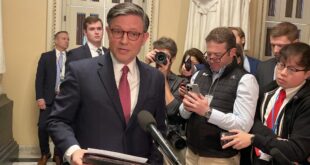Chabeli Carrazana
Originally published by The 19th
The Biden administration is moving to slash child care costs for at least 80,000 low-income families — and potentially thousands more — through a series of updates coming to a federal program.
The administration announced Tuesday its plan to strengthen the Child Care & Development Block Grant (CCDBG), the program that subsidizes care for 1.5 million children, through a new federal rule that, if enacted, is expected to be in place by spring of 2024. The CCDBG program sends funds to states to use to lower the cost of care for families, raise wages for teachers and improve the quality of that care, but currently only about 15 percent of eligible children are served by it, according to First Five Years Fund, an early childhood education advocacy organization.
Expanding the reach of CCDBG is part of a series of executive orders Biden signed in April that directed federal agencies to find places to lower the cost and increase access to child care. Funding for those changes will come from a 30 percent increase to CCDBG funding passed for this fiscal year, which added $1.86 billion to the $8 billion federal program.
“I strongly believe that when we lift up the status and the economic status of families, we lift up the economic status of communities, our entire economy, and our entire nation benefits as a result,” Vice President Kamala Harris said on a press call announcing the initiative.
Central to the changes the administration is proposing through the Department of Health and Human Services (HHS) is a cap on copayments for families on the program at 7 percent of their income. It is also encouraging states to go further and waive copayments entirely for families at or below 150 percent of the federal poverty level — those earning under $45,000 a year for a family of four. Currently, only 14 states have set copayment rates for CCDBG at or below the 7 percent level, which HHS has set as its benchmark for affordability. Copay levels vary state-to-state, from as high as 15 percent in Montana to 1 percent in Arkansas for a family at 150 percent of the federal poverty level in 2022, according to a report by the National Women’s Law Center.
Some states have no copayment at all, but for the ones that have copayments above 7 percent, it’s unclear how they will make up the difference with only limited funding under the new plan.
Child care copayments for families rose nearly 20 percent between 2005 and 2021, HHS estimated, blocking families from participating in the CCDBG program.
HHS estimates that as many as more than 350,000 families could save money if states move to also waive copayments for families earning under 150 percent of the federal poverty level.
The administration is also proposing a requirement that child care providers with the program be paid based on enrollment to their program and not attendance, a move advocates have been pushing for. The change would help create more payment stability because attendance at programs can oscillate due to illnesses or vacation. Attendance-based payment structures have also disincentivized providers from taking low-income families, who may have inconsistent attendance due to work stoppages, access to diapers or other reasons.
HHS wants to ensure providers are paid before services are rendered and not after as is often the case in the program, the senior administration officials said. HHS estimates nearly 200,000 providers would start getting paid on time and more than 100,000 would start getting paid based on enrollment, not attendance. Currently, about 230,000 providers receive subsidies.
States would also have the option to streamline the CCDBG application process by moving applications completely online, under the administration’s proposal. In a third of states, families still have to apply on paper. States would also be encouraged to automatically make siblings of children who already receive the subsidy eligible. Often, families have to reapply when they have another child.
The changes will come through a notice of proposed rulemaking through HHS. They will be subject to an open comment period running through the end of August, before being made final in the spring. Currently, every state participates in the CCDBG program and the administration expects these changes to likely be implemented in every state. Most of the changes would be mandatory, except for those the administration is encouraging for states that want to go further, such as eliminating all payments for very low-income families and streamlining the application.
“This fight is personal for me,” Harris said at the announcement, recounting the story of her child care provider, Regina Shelton, who cared for her and her sister while Harris’ mother worked on breast cancer research.
“She became a second mother to my sister and me. My mother often said that if not for Mrs. Shelton, she would never have been able to do the work that she did,” Harris said. “Those are the stakes of this work: bringing child care to all families who need it. And that is why we must make sure all families can access the life-changing benefits of child care.”
The announcement is also coming just before pandemic-era child care funds are set to expire. To combat the child care crisis created by the COVID-19 pandemic, when thousands of centers closed and millions of child care providers lost their jobs, the Biden administration administered $39 billion to states, territories and tribes to help raise child care worker wages, lower costs to families and expand the supply of care. Those funds will need to be used up entirely by the end of September.
An estimated 3.2 million children are expected to lose their child care seats when those funds dry up, according to a report from the Century Foundation.
It will be months between when those funds and and the administration’s changes to CCDBG take effect and ultimately the changes, if enacted, will not address that larger need, said Julie Kashen, senior fellow and Director of Women’s Economic Justice at The Century Foundation.
“I think the administration would also acknowledge it does not solve the greater problems outside the CCDBG, it does not solve the need for significant funding,” Kashen said. “But it does signal what the administration would like the child care system to look like.”
 Poli Alert Political & Civics
Poli Alert Political & Civics



